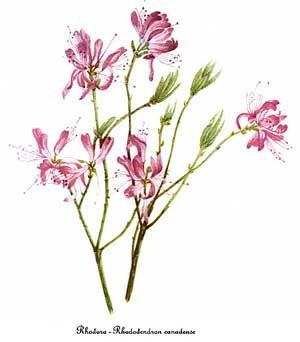
| Botanical Name: | Rhododendrons |
| Life Cycle: | perennial landscaping shrub |
| Planting Time: | spring or fall |
| Height: | 1' to 12' or more |
| Exposure: | partial shade |
| Soil: | rich, moist, well-drained soil with an acidic pH |
| Hardiness: | zones 5 to 8 |
| Bloom Time: | early spring to summer depending on zone |
| Flower Color: | white, pink, lavender, violet-blue, yellow, orange and red |
| Foliage Color: | green |
| Propagation: | cuttings |
| Suggested Use: | landscaping shrubs |
| Growing Hints: | Spring and fall are the best times to purchase and plant azalea and rhododendron clumps. If you buy whole balled or burlap wrapped plants, late summer is the best time for planting. You can grow both of these plants from 4 " cuttings taken in late spring and early summer. Dip cuttings in a rooting hormone, insert them into a moist propagating mix and cover them with plastic, making a mini greenhouse supported with bent wire. Keep cuttings moist and out of direct sun until they root (weeks or months). Remove plastic, harden them off and transplant them. The best sites for azaleas and rhododendrons are sites with loose, hummus-rich soil that is evenly moist and has a pH of 4.5 to 6.5. Pruning should be done immediately after flowering. Do not plant near walnut trees. |
| Interesting Facts: | Rhododendrons have 10 or more stamens, bell-shaped flowers, and leaves that are usually evergreen, while azaleas have 5 stamens, funnel-shaped flowers, and deciduous leaves. Gardeners see these as two different plants, but botanists lump them into one genus (group). |

Add your voice! Click below to comment. ThriftyFun is powered by your wisdom!
Add your voice! Click below to comment. ThriftyFun is powered by your wisdom!